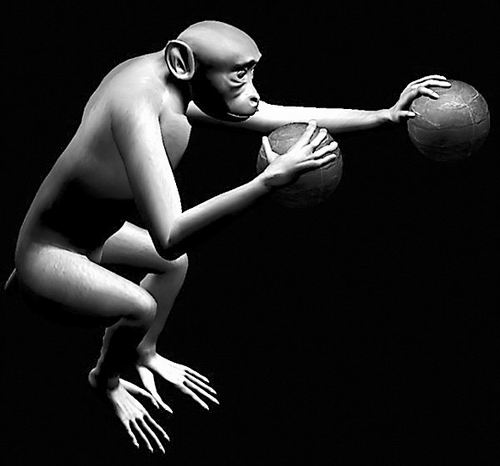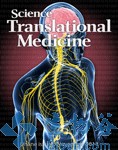
图片来源:杜克大学神经工程学中心
大多数人能毫不犹豫地伸出双臂拥抱朋友或推动手推车,人类四肢和大脑指令的配合是如此完美。而对于设计由大脑控制的假肢的研究人员来说,这种协调的臂部动作是一项艰难的技术挑战。一项新研究显示,一个脑-机界面(BMI)可以通过对运动的可视化而帮助猴子移动两只虚拟手臂。科学家表示,该研究有助研发可帮助脊髓损伤患者恢复运动与感觉的BMI。
BMI的目标是绕过脊髓而重新获得对肢体动作的控制。到目前为止,BMI的成功只限于移动人体的某个单一部分,诸如一只手或一只手臂。该论文作者、美国杜克大学神经科学家Miguel Nicolelis说:“即使最简单的动作,你也必须同时使用手臂和手完成。”
Nicolelis及其同事创建的BMI用来自猴子的脑部记录同时控制两个虚拟手臂。在实验中,研究人员对一只雌猴和一只雄猴的500个神经元进行记录。在实验开始前,这两只猴子的左右脑半球都被植入电极。两只猴子的任务是:在电脑显示器上控制两条虚拟手臂的移动。为了得到果汁的奖励,它们必须将两只虚拟化的手同时放置在圆形目标上,并维持在这个位置上100毫秒。
研究人员发现,在经过几周的训练后,这些虚拟的手臂像猴子自己的手那样被“同化”到猴子的脑内。在超过75%的时间里,猴子都能完成任务。研究人员将该结果发表于近日出版的《科学—转化医学》上。
Nicolelis说,随着时间的推移,两只猴子的表现越来越好,它们的神经元放电模式也发生了变化,这意味着猴子的大脑已经逐渐适应BMI设备。这可能是因为,猴子开始意识到这些虚拟化的手臂是自己身体的一部分。
宾夕法尼亚州匹兹堡大学神经生物学家Andrew Schwartz认可这项新研究的重要意义,但他认为,科学家还可以做得更好。Schwartz指出,虽然猴子需要完成的任务非常简单,但总体成功率只有45%。“我期待更高效的表现、更高的成功率和更逼真的自然运动。”
生物谷推荐的英文摘要

Science Translational Medicine DOI: 10.1126/scitranslmed.3006159
A Brain-Machine Interface Enables Bimanual Arm Movements in Monkeys
Peter J. Ifft, Solaiman Shokur, Zheng Li, Mikhail A. Lebedev and Miguel A. L. Nicolelis
Brain-machine interfaces (BMIs) are artificial systems that aim to restore sensation and movement to paralyzed patients. So far, BMIs have enabled only one arm to be moved at a time. Control of bimanual arm movements remains a major challenge. We have developed and tested a bimanual BMI that enables rhesus monkeys to control two avatar arms simultaneously. The bimanual BMI was based on the extracellular activity of 374 to 497 neurons recorded from several frontal and parietal cortical areas of both cerebral hemispheres. Cortical activity was transformed into movements of the two arms with a decoding algorithm called a fifth-order unscented Kalman filter (UKF). The UKF was trained either during a manual task performed with two joysticks or by having the monkeys passively observe the movements of avatar arms. Most cortical neurons changed their modulation patterns when both arms were engaged simultaneously. Representing the two arms jointly in a single UKF decoder resulted in improved decoding performance compared with using separate decoders for each arm. As the animals’ performance in bimanual BMI control improved over time, we observed widespread plasticity in frontal and parietal cortical areas. Neuronal representation of the avatar and reach targets was enhanced with learning, whereas pairwise correlations between neurons initially increased and then decreased. These results suggest that cortical networks may assimilate the two avatar arms through BMI control. These findings should help in the design of more sophisticated BMIs capable of enabling bimanual motor control in human patients.


 正在提交中...
正在提交中...



